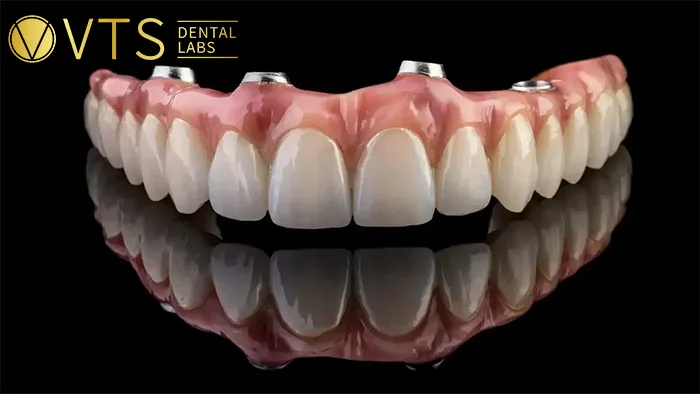
A successful dental crown restoration depends not only on materials and the lab but also begins with precise tooth preparation. Mastering preparation techniques is a key factor in determining the crown’s longevity, fit, and aesthetics.
This article will delve into the step-by-step tooth preparation process to enhance the efficiency and success of dental crown restorations and ensure patient satisfaction.
Preserving the maximum amount of natural tooth structure is critical during the tooth preparation process for dental crowns. This is especially challenging when the tooth has sustained significant damage.
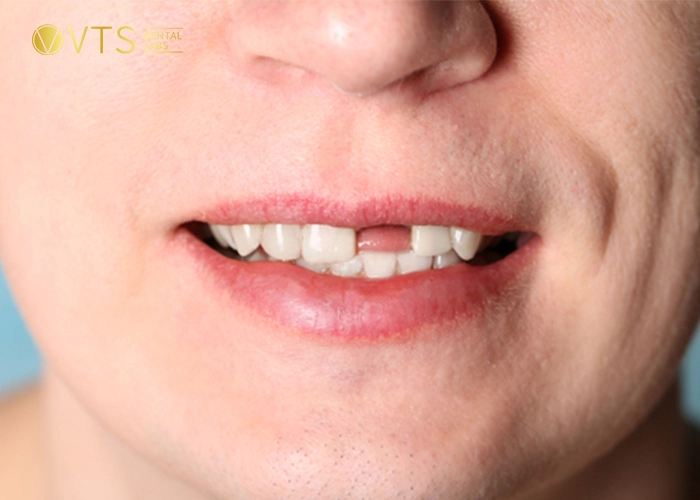
Tooth preparation for dental crowns is important
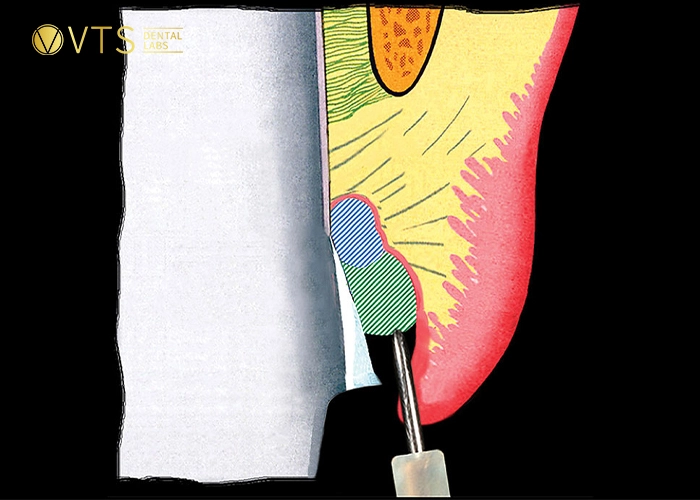
Tooth preparation for dental crowns requires good technique and knowledge.
To ensure successful dental crown restorations, tooth preparation must adhere to the following principles:
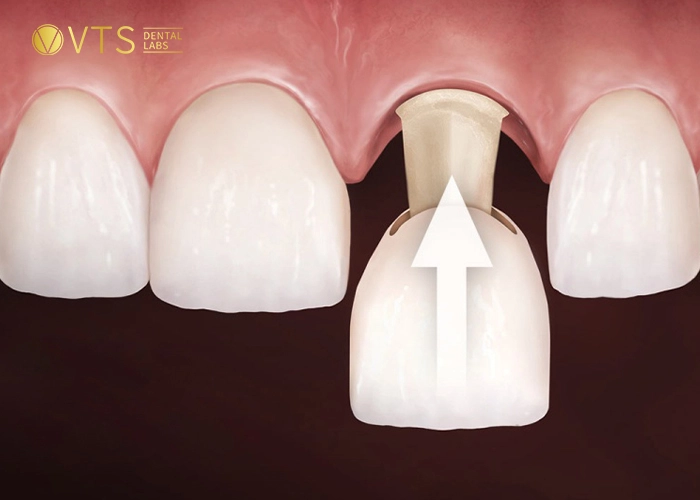
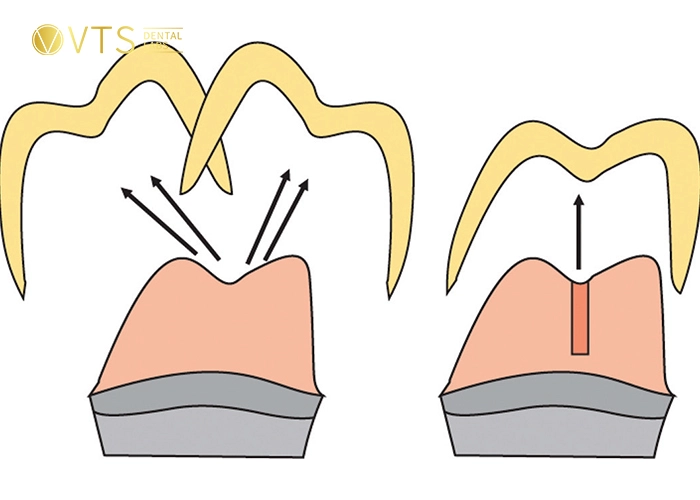
Designing tooth has a shape that fits the dental crown.
1. Pre-operative Assessment: Conduct a clinical examination and take X-rays to evaluate the tooth’s condition and select the most appropriate type of dental crown.
2. Anesthesia and Isolation: Administer local anesthesia to ensure patient comfort and use a rubber dam to isolate the tooth. This helps control moisture and ensures the quality of the crown placement process.
3. Occlusal Reduction: Reduce the chewing surface of the tooth by a precise amount to create adequate space for the crown material while maintaining proper occlusal relationships. Use depth-cutting burs to ensure accurate reduction.
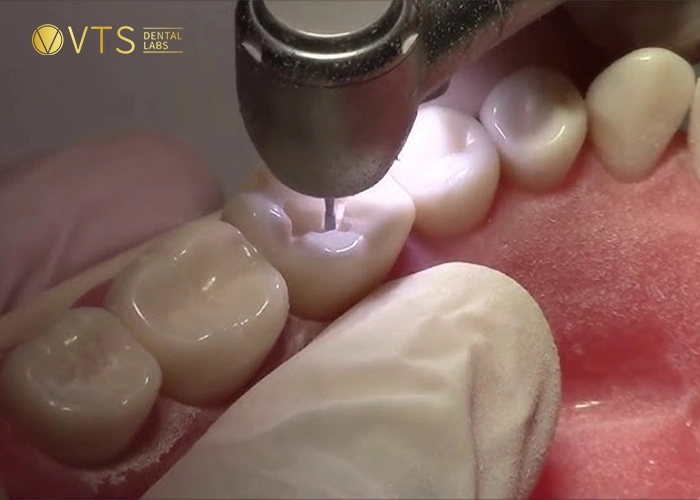
Dentists need to ensure the accuracy of the patient’s bite.
4. Axial Reduction: Reduce the outer, inner, mesial, and distal surfaces of the tooth to create a slight convergence angle, allowing the crown to fit easily over the prepared tooth.
5. Margin Placement and Finishing: Create a clear, well-defined margin. Various types of margins include:
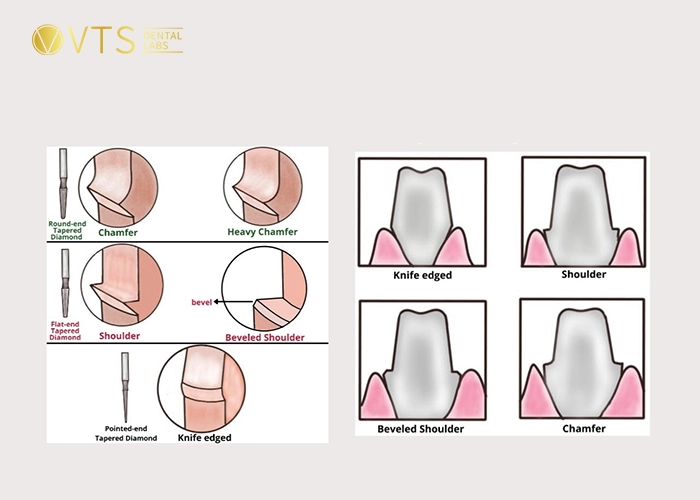
There are many margin placements in the preparation tooth for dental crown.
6. Rounding Internal Angles: Smoothen sharp internal angles of the preparation to prevent stress concentration, reducing the risk of crown fracture.
7. Final Inspection: Thoroughly inspect the prepared tooth for smoothness, proper convergence, adequate reduction, and a clear finish line.
8. Impression Taking: Record the prepared tooth’s details using impression materials or digital scanners. This step is crucial for the dental lab to fabricate an accurate and well-fitting crown.
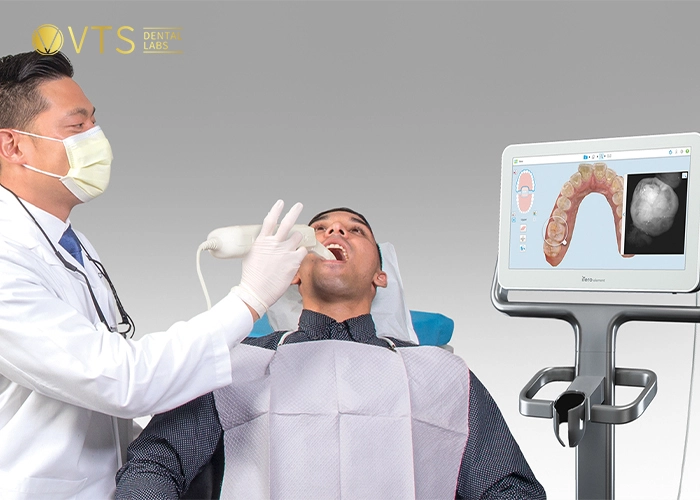
Taking impressions is the final step in preparing teeth for dental crowns.
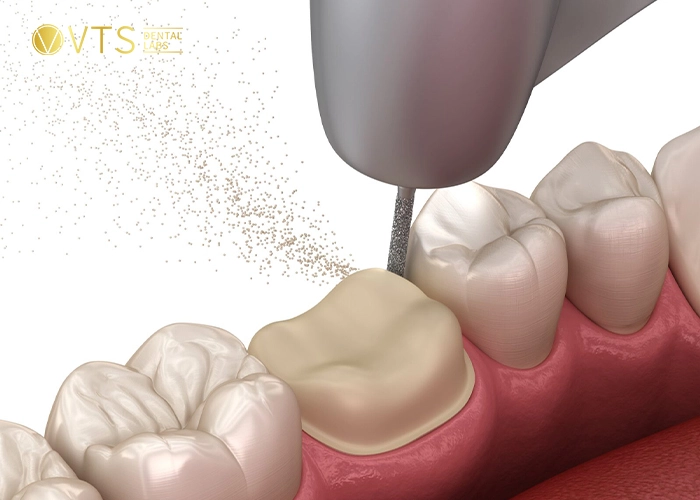
Dentists need to know the basic errors for dental crown
Proper tooth preparation techniques are the foundation for successful dental crown restorations, ensuring both functional and aesthetic outcomes for patients. At VTS Dental Lab, we take pride in delivering precisely crafted crowns, utilizing a wide range of materials to meet the most demanding clinical requirements.
Contact VTS today for expert consultation on premium restorative solutions!
